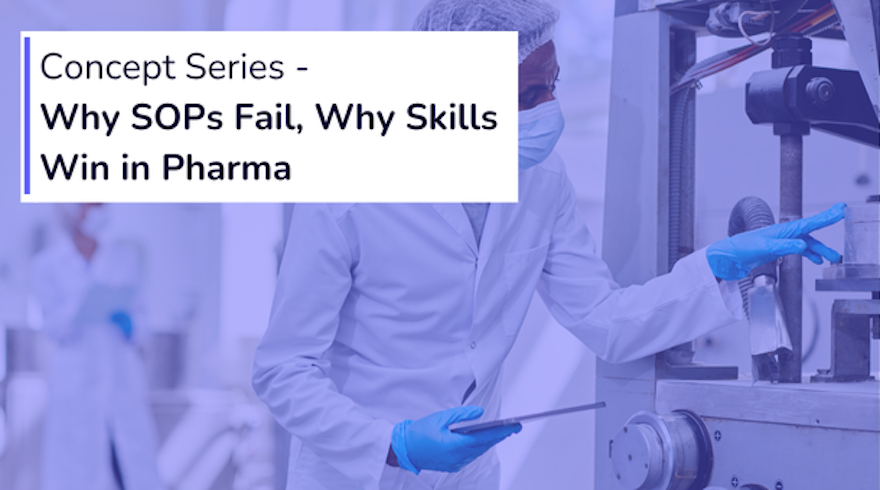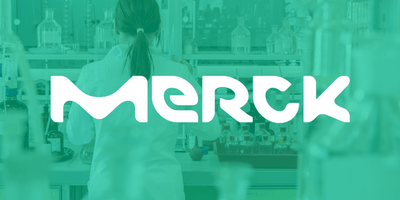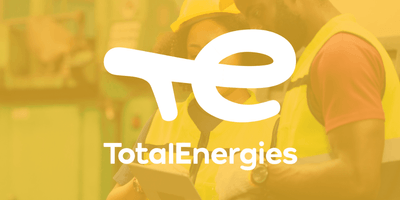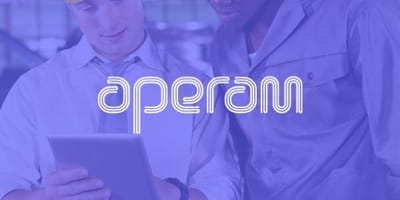In cleanrooms from New Jersey to Singapore, a troubling pattern repeats itself. Pharmaceutical companies invest millions in creating Standard Operating Procedures—meticulously documented processes designed to ensure GMP compliance, product quality, and patient safety. These SOPs fill entire document management systems, undergo exhaustive review cycles, and form the backbone of every FDA inspection defense.
Yet despite this documentation fortress, FDA issued 190 warning letters to drug and biologics manufacturers in fiscal year 2024—a significant increase from 94 in 2023 and 74 in 2022. Many citations point directly to SOP failures: procedures not followed, documentation inadequate, training insufficient, quality systems fundamentally broken.
Meanwhile, a quiet revolution is reshaping how leading pharmaceutical organizations approach operational excellence. Rather than relying primarily on ever-expanding documentation, they're investing in developing human capabilities that can adapt, problem-solve, and respond to the unexpected challenges that no procedure manual can fully anticipate.
The SOP Crisis in Pharmaceutical Manufacturing
Standard Operating Procedures were meant to be the pharmaceutical industry's answer to variability and error. Write it down, train on it, follow it religiously, and quality would follow. The reality playing out in inspection reports and warning letters tells a different story.
When Documentation Becomes a Liability
Consider a typical scenario: A Quality Control analyst encounters an Out-of-Specification result during stability testing. According to recent compliance analysis, many pharmaceutical companies struggle with poorly written or outdated SOPs that create compliance gaps rather than preventing them. The analyst searches through the document management system, finds the relevant SOP, only to discover it references a piece of equipment that was replaced eighteen months ago and a software system that no longer exists.
The Complexity Trap
Pharmaceutical SOPs have become increasingly complex as regulatory requirements evolve and companies attempt to address every conceivable scenario. According to industry research on SOP simplification, these dense, intricate documents lead to misinterpretation and errors in execution, creating bottlenecks in compliance processes rather than facilitating them.
📊 Case Study: SOP Simplification Success
A global pharmaceutical company faced challenges with SOP complexity that led to procedural errors and inconsistencies in production. By implementing a simplification initiative that reduced SOP length by thirty percent and incorporated visual aids, they achieved a twenty-five percent reduction in procedural errors and significant improvement in compliance rates.
The Onboarding Nightmare
The impact of SOP complexity becomes especially apparent during employee onboarding. New hires in pharmaceutical manufacturing may take weeks or even months to become fully productive, delayed by the need to review hundreds of pages of procedures before they can begin work. This lengthy process creates multiple problems: delayed productivity, compliance risks when onboarding is rushed, and employee frustration that contributes to turnover in an industry already facing significant labor shortages.
The Multi-Site Consistency Challenge
For pharmaceutical companies operating across multiple sites and geographic regions, maintaining SOP consistency becomes exponentially more difficult. Variations in how procedures are understood and implemented across different locations lead to discrepancies in product quality and regulatory compliance—precisely the problems SOPs were meant to solve.
Why Pharma SOPs Fail: The Root Causes
Developed in Isolation from Reality
One of the most fundamental problems with pharmaceutical SOPs is how they're created. Too often, procedures are developed by quality assurance professionals or regulatory specialists who are removed from daily manufacturing operations. The result? SOPs that fail to reflect real-world tasks, leading operators to develop informal adaptations and workarounds that create compliance risk.
The Language Barrier
Unclear language and poor communication consistently rank among primary SOP failure points in pharmaceutical operations. When a manufacturing technician with a high school diploma must interpret procedures written by PhD scientists using technical terminology, critical steps get misunderstood. This isn't a training problem—it's a communication design problem.
The Update Paradox
Pharmaceutical operations evolve constantly: new equipment, updated software systems, modified processes to improve efficiency or address deviations. Yet rapidly evolving technologies and regulations quickly render SOPs outdated. The bureaucratic machinery required to update a single SOP—review cycles, training updates, version control, documentation—means that procedures lag behind reality, sometimes by months or years.
The Enforcement Problem
Even when SOPs are clear and current, enforcement remains inconsistent. Operators may know procedures exist but don't follow them when there are no meaningful consequences for deviation—or worse, when following the documented procedure actually prevents them from meeting production targets. This creates what safety researchers call "normalized deviance," where breaking the rules becomes standard practice because the rules themselves are unworkable.
The Regulatory Cost of SOP Failure
The consequences of procedural failures extend far beyond operational inefficiencies. They result in warning letters, consent decrees, and in extreme cases, facility shutdowns that can cost companies hundreds of millions of dollars.
Recent Warning Letter Trends
Analysis of FDA's fiscal year 2024 warning letters reveals that the top cited violations remained consistent with prior years, with quality control and manufacturing operations dominating the list. However, the agency's commentary has become more forceful, particularly around recalls and data integrity.
In twenty-three letters, FDA specifically mentioned recalls, with increasingly direct language calling out companies for delays or refusals to initiate voluntary recalls when problems were identified. This represents a significant shift in enforcement strategy.
SOP Violations in Real Warning Letters
Recent warning letters provide sobering examples of how SOP failures manifest:
- Laboratoire Druide (Canada): Failed to establish and follow appropriate written procedures for cleaning and maintenance of equipment, resulting in quality system inadequacies.
- Yiling Pharmaceutical: Used non-dedicated equipment that wasn't properly designed or maintained, with components that didn't close tightly, allowing drug residues to accumulate and creating cross-contamination risks.
- Alkem Laboratories (India): Retired a malfunctioning UV spectrophotometer without conducting investigations or impact assessments on previously generated test results, then released batches tested with the faulty instrument into the US market.
The Supplier Qualification Gap
One particularly troubling trend involves contract manufacturing relationships. AACE Pharmaceuticals received a warning letter after FDA found that its quality unit lacked adequate supplier qualification procedures to ensure drugs received from its contract manufacturer were produced under cGMP. The company had identified significant deficiencies with the contractor in 2020 but still qualified them as approved, then requalified them in 2023 without evaluating whether corrective actions had adequately addressed the problems.
The Skills-Based Alternative: Building Capability, Not Just Documentation
While regulatory citations mount and SOP systems grow ever more complex, a transformation is occurring in how leading pharmaceutical organizations approach operational excellence. Rather than viewing procedures as the primary mechanism for ensuring quality, they're recognizing that skilled, knowledgeable people represent the true foundation of GMP compliance.
The Shift Toward Competency-Based Systems
The pharmaceutical industry has begun recognizing that compliance isn't about checking boxes—it's about building genuine competency. According to industry consultants with decades of experience, training in pharma is "in dire need of change," having been viewed too long as a series of procedural, bureaucratic activities rather than true education.
The problem is acute: employees rarely understand what they're doing or why, and consequently make avoidable errors and can't recognize when processes are no longer in a state of control. Even organizations attempting to provide high-quality training face obstacles including limited time from subject matter experts and inability to access proper training environments.
The Perfect Storm in Specialized Manufacturing
Cell and gene therapy manufacturing presents a particularly acute challenge. Growth is rapid, experienced subject matter experts are scarce, and manufacturing personnel must perform wide ranges of high-risk manual process steps where their skill is critical to product quality. Very few individuals possess these specialized skills, which aren't taught in university programs, meaning organizations themselves must deliver comprehensive training programs in environments where time, facilities, and expert resources are more limited than in traditional pharmaceutical manufacturing.
Modern Training Approaches
Pharmaceutical training is evolving beyond traditional classroom lectures and document review. Leading training providers now emphasize real-time learning with industry experts, on-demand courses for flexibility, and certification programs that demonstrate verifiable expertise rather than mere attendance.
Modern pharmaceutical learning programs structure content into concise, topic-focused microlearning modules that enable busy professionals to absorb and retain critical information more efficiently. They incorporate virtual workshops, team projects, and peer forums to replicate the organic learning that occurs in collaborative environments.
Technology-Enhanced Learning
Virtual reality and augmented reality are beginning to transform pharmaceutical training. However, industry experts caution that VR must be carefully designed to teach fundamental, transferable skills rather than just specific procedures. VR works best for teaching principles—like how to move when performing interventions above a filling line—rather than how to perform interventions on one very specific piece of equipment.
AI and the Future of Pharma Training
Artificial intelligence is beginning to reshape pharmaceutical learning and development. Johnson & Johnson mandated generative AI training for over fifty-six thousand employees to ensure widespread AI literacy. AI-driven initiatives streamline training processes and equip employees with skills to leverage advanced technologies in daily tasks.
What Skills Actually Matter in Pharmaceutical Operations
If SOPs represent documented knowledge, skills represent applied capability. Understanding what capabilities matter most helps pharmaceutical organizations focus their development efforts where they'll generate the greatest impact.
Technical Competencies
Pharmaceutical professionals need deep technical knowledge spanning multiple domains. ISPE's Certified Pharmaceutical Industry Professional credential outlined comprehensive knowledge areas including:
- Understanding of manufacturing processes for both small molecule and biologic pharmaceuticals
- Knowledge of building and critical utility systems supporting manufacturing
- Comprehension of analytical methods and quality control laboratory operations
- Grasp of validation principles and regulatory requirements
- Facility design considerations and equipment qualification
Problem-Solving and Critical Thinking
Leading pharmaceutical training programs now emphasize structured, risk-based approaches to problem-solving, teaching techniques like failure mode effects analysis, hazard analysis critical control points, and root cause analysis tools. These skills enable professionals to turn data into information and improve decision-making when encountering situations not explicitly covered in procedures.
Cross-Functional Understanding
Modern pharmaceutical operations require professionals who understand how different functions interconnect. Training increasingly covers the entire spectrum from equipment operation and process flows to change control, deviations, CAPA systems, and data integrity—helping employees see beyond their immediate role to understand broader quality implications.
🎯 Skills Development Success
NSF's approach to pharmaceutical training focuses on "effective education, not traditional training" to give employees skills and competencies that change behaviors and improve performance. Their emphasis on psychological safety and learning environments where people can experiment, fail, and learn represents a fundamental shift from compliance-focused cultures where deviation is punished.
Regulatory Intelligence
Understanding global regulatory landscapes enables pharmaceutical professionals to anticipate requirements, interpret guidance appropriately, and make informed decisions about compliance strategies. This knowledge includes awareness of regulatory body structures, types of filings required, GMP expectations across jurisdictions, and industry-generated harmonization guidance.
Implementing a Skills-Based Approach in Pharma
Transitioning from documentation-centric compliance to capability-driven excellence requires strategic commitment and tactical execution. Here's how leading pharmaceutical organizations are making this shift.
Redefine Training Objectives
Training should focus on understanding, not memorization. Instead of requiring employees to recite procedure steps, assess their ability to recognize when processes deviate from normal states and understand why specific controls matter for product quality. This shift from compliance activity to genuine education transforms how people engage with their work.
Leverage Video-Based Learning
Video-based SOPs offer significant advantages over traditional text-based procedures. Videos are inherently more engaging, capturing attention and making content more memorable. They ensure consistency across multiple sites by standardizing how procedures are demonstrated and understood. For pharmaceutical companies operating globally, this consistency is crucial for maintaining uniform quality standards regardless of location.
Implementation Strategy: Rapid authoring tools enable companies to create training content quickly with pre-built templates and interactive functionality. This accelerates onboarding, reduces time-to-productivity for new hires, and makes it feasible to keep training materials current as processes evolve.
Create Immersive Learning Environments
ISPE's EASE facility provides immersive, hands-on opportunities to interact with equipment in a training environment built specifically for pharmaceutical workers. Attendees conduct exercises in classrooms and cleanrooms, including preparation and aseptic manipulation inside biological safety cabinets. This practical experience builds confidence and competence in ways that no written procedure can match.
Invest in Continuous Professional Development
Pharmaceutical professionals need ongoing learning opportunities to stay current. Organizations like CfPIE offer extensive certification programs recognized industry-wide, covering everything from aseptic processing to regulatory compliance strategy. These programs enable professionals to demonstrate verifiable expertise that goes beyond basic training completion.
Build Quality Culture Through Competency
NSF emphasizes that quality depends on both the quality of people and the effectiveness of the pharmaceutical quality system. By focusing on building genuine competency rather than just training compliance, organizations create cultures where employees understand the "why" behind procedures, enabling them to make sound judgments when facing novel situations.
The Hybrid Model: SOPs and Skills Working Together
The argument here isn't to eliminate SOPs—that would be regulatory suicide in pharmaceutical manufacturing. Rather, the goal is radically rethinking their role. Procedures should serve as frameworks within which skilled professionals exercise informed judgment, not as rigid scripts that eliminate human intelligence from the equation.
SOPs as Guardrails, Not Straightjackets
Well-designed pharmaceutical SOPs establish boundaries and critical controls without attempting to script every decision. Effective procedures should utilize active voice and precise terminology, incorporate visual elements like flowcharts and decision trees, and maintain consistent formatting that helps personnel quickly locate relevant information.
Risk-Based Approach to Documentation
Not all procedures require the same level of detail. High-risk operations directly affecting product quality or patient safety warrant comprehensive documentation. Routine operations where skilled personnel exercise judgment might be better served by principles-based guidance supplemented by competency assessment.
Dynamic Documentation Systems
Modern compliance platforms use AI-powered dashboards that track new regulations, warning letters, and GMP guidance, pushing tailored alerts with suggested SOP edits. These systems trim the lag between rule changes and procedure updates, helping organizations stay current without overwhelming change control processes.
Skills Enable Adaptive Compliance
The most valuable pharmaceutical professionals combine procedural knowledge with deeper understanding that enables adaptive compliance. When equipment malfunctions during a critical manufacturing step, they don't just follow the deviation SOP—they understand the underlying product and process knowledge needed to assess risks, determine appropriate immediate actions, and communicate effectively with quality and technical teams.
Measuring Success: From Compliance Metrics to Capability Indicators
Organizations serious about transitioning to skills-based approaches need different measures of success than traditional compliance tracking.
Beyond Training Completion Rates
Instead of tracking what percentage of employees completed SOP training by the deadline, measure how well they can apply that knowledge. Can they recognize process deviations? Do they understand the relationship between process parameters and product quality? Can they effectively investigate when things go wrong?
Reduction in Procedural Deviations
When employees truly understand processes rather than just following written steps, procedural deviations decrease. Track not just deviation frequency but the nature of deviations—are they from lack of understanding, unclear procedures, or genuine process issues requiring investigation?
Investigation Quality
Skilled pharmaceutical professionals conduct more effective investigations. They ask better questions, consider broader contributing factors, and develop more robust corrective actions. Organizations can assess investigation quality through metrics like investigation cycle time, effectiveness of CAPAs, and recurrence rates.
Inspection Readiness
Perhaps the ultimate measure: when regulators arrive, can your team confidently explain not just what they do, but why they do it? Skilled personnel perform better during inspections because they possess genuine understanding rather than memorized responses. This translates to fewer observations, faster inspection resolutions, and stronger regulatory relationships.
The Future of Pharmaceutical Operations: Intelligent Compliance
The pharmaceutical industry stands at an inflection point. Regulatory complexity continues increasing, manufacturing technologies advance rapidly, and workforce challenges intensify. Organizations that cling to documentation-centric compliance strategies will find themselves buried under ever-growing SOP libraries while still facing the same quality issues and regulatory citations.
The Personalized Learning Revolution
AI-driven learning platforms are beginning to deliver truly personalized pharmaceutical education. These systems analyze individual learning patterns, identify knowledge gaps, and adapt content delivery to maximize retention and application. Rather than one-size-fits-all training, employees receive development tailored to their role, experience level, and learning style.
Predictive Compliance
Advanced analytics are enabling pharmaceutical companies to move from reactive to predictive compliance. By analyzing patterns across deviations, CAPAs, change controls, and training records, AI systems can identify emerging risks before they manifest as quality events or regulatory observations. This shift from correction to prevention represents the next frontier in pharmaceutical quality management.
The Skills Marketplace
Leading pharmaceutical organizations are creating internal skills marketplaces where employees can identify capability gaps, access relevant learning resources, and demonstrate competencies that open new career opportunities. This approach aligns individual development with organizational needs, creating engagement while building the capability base companies need to compete.
🚀 Vision for 2030
Imagine a pharmaceutical manufacturing environment where new operators arrive with foundational understanding from industry-recognized training programs. They enter immersive VR environments that teach principles and build confidence before touching actual equipment. On the floor, they access just-in-time learning through augmented reality overlays that provide context-specific guidance without replacing human judgment. When deviations occur, they conduct investigations using AI-powered tools that suggest contributing factors based on historical patterns. And throughout their careers, they continuously develop new capabilities that keep pace with technological and regulatory evolution.
Practical Steps: Starting Your Skills-Based Transformation
For pharmaceutical quality leaders ready to shift from documentation-centric to capability-driven compliance, here's a practical roadmap.
Step 1: Assess Current State Honestly
Conduct a frank evaluation of your SOP effectiveness. What percentage of deviations relate to procedural issues—unclear instructions, outdated procedures, conflicts between SOPs? Survey operators about which procedures create confusion or seem impractical. Review inspection observations for patterns related to training or procedural adequacy.
Step 2: Identify Critical Competencies
Map the capabilities truly essential for quality operations in your facility. What knowledge, skills, and behaviors separate adequate performers from exceptional ones? Where do quality events suggest capability gaps? Reference industry frameworks like ISPE's CPIP competency model as starting points, then customize for your operations.
Step 3: Simplify and Modernize SOPs
Begin an SOP simplification initiative. Target your most complex or frequently deviated procedures first. Reduce length by thirty percent or more through eliminating redundancy, improving clarity, and incorporating visual aids. Convert critical procedures to video format. Involve operators in rewriting procedures to ensure they reflect actual practice.
Step 4: Transform Training from Compliance to Capability
Redesign training programs to build genuine understanding. Replace passive document review with active learning—simulations, case studies, hands-on practice with equipment, and structured problem-solving exercises. Assess comprehension through practical demonstrations rather than written tests.
Step 5: Create Learning Infrastructure
Invest in platforms and environments that support continuous learning. This might include learning management systems with pharmaceutical-specific content, dedicated training spaces with representative equipment, or partnerships with industry training providers. The key is making learning accessible and ongoing rather than episodic.
Step 6: Measure What Matters
Shift metrics from compliance activities to capability outcomes. Track investigation quality, first-pass yield improvements, reduction in procedural deviations, inspection performance, and employee confidence scores. Share these results broadly to demonstrate the business value of skills investment.
Step 7: Build for Scale
Design your approach to work across multiple sites. Standardize core competency frameworks while allowing site-specific customization. Use technology to deliver consistent training globally. Create communities of practice where operators share learning across locations.
Overcoming Resistance: Addressing Common Concerns
"But Regulations Require Written Procedures"
Absolutely correct—and nothing in a skills-based approach eliminates SOPs. The shift is from viewing procedures as the primary control to recognizing them as one element within a broader quality system. Regulators increasingly emphasize quality culture and system effectiveness, not just documentation completeness.
"We Don't Have Time or Budget for Extensive Training"
Consider the costs of not training: deviations, investigations, CAPAs, inspection observations, product loss, regulatory delays. Effective training reduces all these costs while improving productivity. Moreover, video-based training and rapid authoring tools make quality learning more affordable and faster to deploy than traditional approaches.
"Our Experienced Staff Already Know Everything"
Experience is invaluable, but even seasoned professionals benefit from structured capability development. Continuous learning keeps knowledge current as technology and regulations evolve. Plus, experienced staff should be teaching next-generation employees—a process that requires its own skill development in mentoring and knowledge transfer.
"This Sounds Like More Bureaucracy"
Actually, the opposite. Skills-based approaches reduce bureaucracy by eliminating redundant documentation and ineffective training. Simplified SOPs and targeted competency development create leaner, more effective quality systems than traditional document-heavy approaches.
The Bottom Line: Intelligent Compliance for Modern Pharma
The pharmaceutical industry's relationship with Standard Operating Procedures has become dysfunctional. We've created documentation systems so complex that they actively hinder the compliance they're meant to ensure. We've invested billions in procedures that sit unread in document management systems while quality events and regulatory citations continue unabated.
The path forward isn't abandoning procedures—it's recognizing their limitations and investing equally in the human capabilities that bring procedures to life. It's shifting from compliance theater to genuine competence, from documentation-checking to problem-solving, from procedural rigidity to adaptive intelligence.
The regulatory environment, far from preventing this transformation, increasingly demands it. FDA's escalating enforcement actions make clear that documentation alone doesn't ensure quality. Inspectors want to see employees who understand their work, can explain their decisions, and demonstrate genuine capability—not just recite procedures.
The business case is equally compelling. Organizations that simplify procedures and invest in skills see measurable improvements: fewer errors, faster time-to-productivity, better inspection outcomes, and stronger quality culture. In an industry facing labor shortages and technological disruption, these advantages compound into sustainable competitive differentiation.
The Choice Ahead
Pharmaceutical companies face a choice. Continue down the current path—ever-more-complex SOP systems, compliance-focused training, and reactive quality management—while wondering why quality events persist and regulatory citations accumulate. Or embrace a new model that recognizes human capability as the foundation of pharmaceutical quality, with procedures serving as frameworks that support skilled judgment rather than replacing it.
The organizations that thrive in pharmaceutical manufacturing's next chapter won't be those with the most SOPs or the longest training modules. They'll be those that develop the most capable people—professionals who combine deep technical knowledge with problem-solving skills, regulatory intelligence with practical wisdom, and procedural understanding with adaptive judgment.
Because ultimately, pharmaceutical quality doesn't emerge from document management systems or training databases. It emerges from the thousands of daily decisions made by competent professionals who understand not just what the procedures say, but why they matter, when they apply, and how to exercise sound judgment when facing the inevitable situations no procedure anticipated.
The Future is Clear: SOPs will always have a place in pharmaceutical operations. But that place is as tools supporting skilled professionals, not as substitutes for human intelligence and judgment. The companies that recognize this truth—and invest accordingly in capability development—will define the future of pharmaceutical quality.
The revolution isn't coming. It's already here. The question is whether your organization will lead it or be left behind by it.





